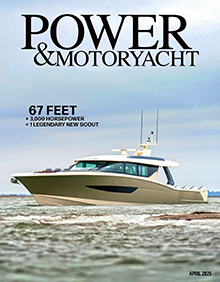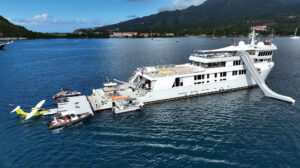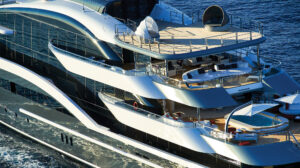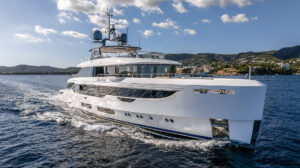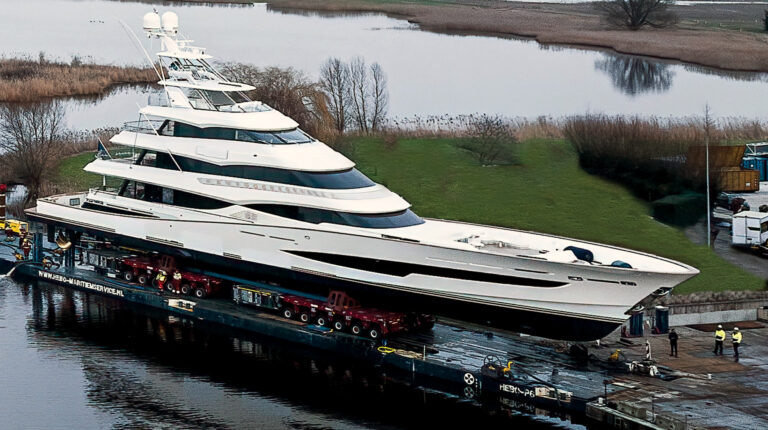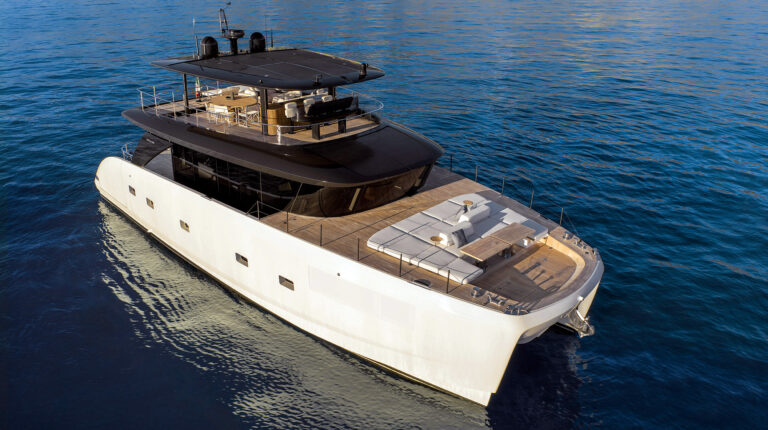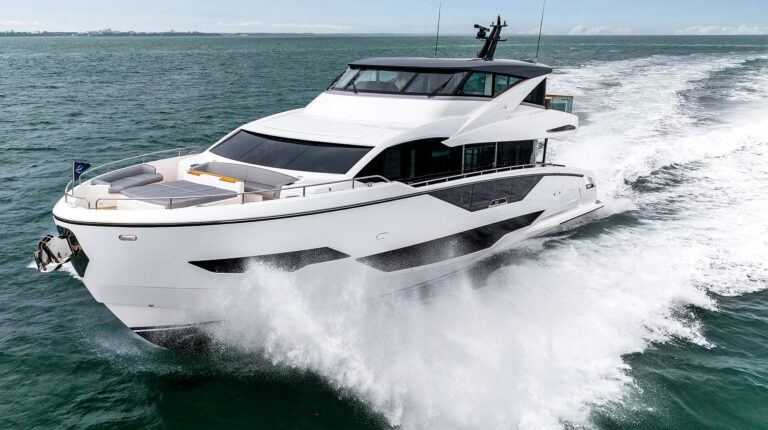
Even with many cruises under her hull, this Feadship finds circling South America extraordinary.
Editor’s Note: We recently introduced you to the South American circumnavigation that the Feadship Queen of Diamonds undertook from late 2004 through 2005. Capt. Ian van der Watt, who has been master of Queen of Diamonds for years, kept a journal. We rejoin his story with the yacht arriving in Chile.
CROSSING—AND CROSSED—CHANNELS
The Straits of Magellan were like a millpond. They’re shared by Argentina and Chile, but the majority of the waterways are controlled by the Chilean Armada. Officials in Punta Arenas control the northern section, and Puerto Williams controls the southern region. We’d received approval to skip Punta Arenas and proceed directly to Ushuaia, which is Argentinean and on the Beagle Channel. (The frontier between Chile and Argentina lies at the center of the Beagle Channel, and in the early 1980’s there was almost a war between the two countries over sovereignty of the territory. The Pope intervened, and today the areas are governed by defined rules and areas.)
The first few days through the straits, we contacted all the control points established by the authorities. Each evening before dark we’d find one of the approved anchorages and anchor with two anchors and lots of scope, keeping an eye out for the rachas, or squalls, that instantly appear and can easily gust to 60 knots. We headed south and east until we reached the O’Brien Channel, the crossover point to Puerto Williams’ control.
As we entered his jurisdiction, the port captain of Puerto Williams was amazed to learn that we’d gotten this far without entering Chile and immediately dispatched a gunboat to escort us back to Puerto Williams, a distance of more than 120 NM. Unaware of his decision, we were surprised to see a gunboat bearing down on us and advise us that we were in violation of Chilean laws. We now had a double dilemma, as we hadn’t cleared Argentina customs. We contacted the Argentinean authorities to let them know what was transpiring, and they immediately directed us to Puerto Williams but told us not to worry, as they would enquire as to whether the crew was being treated fairly. I found that quite remarkable.
The authorities boarded in a snowstorm, and they apologized for any inconvenience. They took a copy of all our radio contacts, phone calls, and e-mails with the Punta Arenas authorities. Aware that we’d done our due diligence, they even offered free pilotage to return us to Ushuaia in the morning. On further inquiry from the port captain, who invited us to meet him and the head of the Chilean Armada for coffee, we could apply for pilotage exemption in the Straits of Magellan and the Chilean archipelago. We submitted all of our paperwork, which we were told was going to take a few days to process.
So we remained in Puerto Williams, a military post inhabited by 2,300 residents, 2,000 of which are navy personnel. The port captain runs a tight show, but everyone was polite and made us feel welcome. For example, during a storm with winds gusting to 60 knots, our tender line got caught in a prop, and we had to request a diver to come free it. (The water temperature was 45 degrees, and we weren’t equipped for that kind of diving.) Diego Llaner, who’s in charge of the fisheries, came out himself and freed the line. We invited him to dinner the next day, and he brought cod and king crab, which our chef prepared. He then took us on a tour of Puerto Williams that included an obscure hut that housed an antiaircraft gun emplacement, built for the war that almost broke out between Chile and Argentina. We also saw a tribe of Yagan Indians, who are indigenous to Tierra del Fuego and sold artisan wares to the crew, and the Micalvi, a vessel used by the Chilean Navy until the 1970’s, when she hit a rock and was towed to shore, where she now serves as a bar and restaurant, decorated with yachty paraphernalia.
Despite the hospitality, our crew never acclimated to the cold, blustery weather. We often encountered isolated snowfalls in Beagle Channel, but although the temperature never fell below freezing, it never stuck. Fortunately, we’d bought freezer suits for everyone to keep warm.
Another thing we never acclimated to: The Chilean channels are either a navigator’s dream or nightmare. If you’re intent on plotting a course using GPS coordinates on either the British Admiralty or Chilean Armada charts, you’ll discover discrepancies at every turn. Our experience was that charts were only a guide, and that the only true navigational aids were radar, eyes, and the depthsounder. Mariners must pay close attention regardless, as your view can be instantly obstructed by a violent squall or chubasco (tropical storm). Fortunately, you get good radar returns from the edges of the channels, but with unmarked rocks in some locations, it’s prudent to run only in daylight.
Specifications
- Builder: Feadship
This article originally appeared in the July 2006 issue of Power & Motoryacht magazine.

